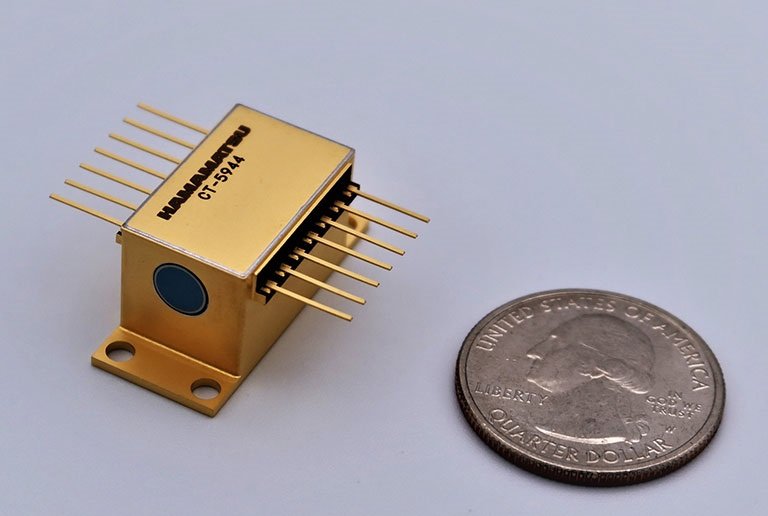World’s Smallest Wavelength-Swept QCL Ensures Portability of All-Optical Gas Analyzer
2021.08.27 / By admin
HAMAMATSU, Japan, Aug. 25, 2021 — Hamamatsu Photonics and the National Institute of Advanced Industrial Science and Technology (AIST) in Tokyo collaborated on an all-optical, portable gas monitoring system for predicting volcanic eruptions with a high degree of sensitivity. In addition to providing stable, long-term monitoring of volcanic gases near volcanic craters, the portable analyzer could also be used to detect toxic gas leaks in chemical plants and sewers and for atmospheric measurements.
The system contains a miniaturized, wavelength-swept quantum cascade laser (QCL) developed by Hamamatsu. At around 1/150th the size of previous QCLs, the laser is the world’s smallest wavelength-swept QCL. The drive system for the gas monitoring system, developed by AIST, will allow the tiny QCL to be mounted into lightweight, portable analyzers that can be carried anywhere.
The world’s smallest wavelength-swept QCL is only 1/150th the size of previous wavelength-swept QCLs. Courtesy of Hamamatsu Photonics KK and New Energy and Industrial Technology Development Organization (NEDO).
Leveraging Hamamatsu’s existing microelectromechanical system (MEMS) technology, the developers completely redesigned the QCL’s MEMS diffraction grating, reducing it to about 1/10th the size of conventional gratings. The team also employed a small magnet that was arranged to reduce unnecessary space, and precisely assembled the other components with accuracy down to units of 0.1 μm. The QCL’s external dimensions are 13 × 30 × 13 mm (W × D × H).
Wavelength-swept QCLs use a MEMS diffraction grating that disperses, reflects, and emits mid-infrared light while rapidly shifting the wavelength. Hamamatsu’s wave-swept QCL is tunable in the wavelength range of 7 to 8 μm. This range is absorbed easily by the SO2 and H2S gases that are considered to be early predictors of a possible volcanic eruption.
To achieve a tunable wavelength, the researchers used a device design technology that is based on the quantum effect. For the light-emitting layer of the QCL element, they used an anti-crossed dual-upper-state design.
When the wavelength-swept QCL is combined with the drive system developed by AIST, it can achieve a wavelength sweeping speed that acquires a continuous mid-infrared light spectrum within 20 ms. The QCL’s high-speed acquisition of the spectrum will facilitate analyses of transient phenomena that change rapidly over time. The spectral resolution of the QCL is about 15 nm, and its maximum peak output is approximately 150 mW.
Currently, most analyzers used to detect and measure volcanic gases in real time have electrochemical sensors. The electrodes in these sensors — and the performance of the analyzer — deteriorate quickly, due to constant exposure to toxic gas. All-optical gas analyzers use a long-life light source and require less maintenance, but the optical light source can take up a lot of space. The size of these analyzers makes them difficult to install near volcanic craters.
The next-generation volcanic gas monitoring system, equipped with the tiny wavelength-swept QCL, will provide volcanologists with an all-optical, compact, portable unit that has high sensitivity and easy maintenance. The researchers at Hamamatsu and their colleagues at AIST and the New Energy and Industrial Technology Development Organization (NEDO), which supported the project, will continue to investigate ways to increase the analyzer’s sensitivity and reduce maintenance.
The team is planning multipoint observations to test and demonstrate the portable analyzer. Products that use the wavelength-swept QCL and drive circuits together with Hamamatsu photodetectors are planned for release in 2022.


